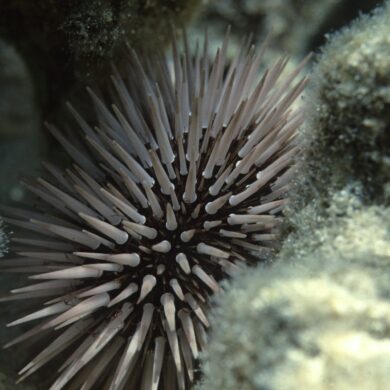By Rubeena Basra | SQ Staff Writer | SQ Online (2014-15)
What is intelligence? For one, it can be the ability to think and learn, but how exactly do we measure this concept? One way to measure intelligence among humans is the IQ test. What is even more difficult is measuring intelligence across different species. One animal in particular that has been researched numerous times for its intelligence and unique behavior is the dolphin. These popular creatures are recognized worldwide and have caught the interest of many individuals for their unique capabilities. One of the main characteristics that have lured many to study more about this animal is their intelligence.
Indicators of Intelligence¹:
The unique senses that the dolphin is adapted with allows the dolphin to conduct unique behavior that we classify as intelligent for their species. Our very own Dr. Christine M. Johnson from the UC San Diego Cognitive Science Department has done research that indicates that dolphins have problem-solving capabilities in a lab environment and unique social behavior in the wild. “Studying sophisticated animals gives us perspective of what we are , finding our place in the natural world, dolphins are a part of that for me” – Dr. Johnson. Dolphins have been observed to do interesting behaviors such as body and vocal imitation, versatile use of objects, and self-awareness tasks. Dolphins in captivity were seen to imitate seal movements in their tank as well as human movements with the use of their fins. Dolphins in captivity have demonstrated unique vocal imitation displays such as imitating human voices, trainer whistles, diver bubbles,and other environmental sounds. Dolphins have also been observed to play with items while in captivity in a unique way. Some examples are using different parts of their body to bounce a ball and imitating how a diver scraped algae off a wall. In Dr. Johnson’s experience, “the way dolphins were manipulating the trainers and getting out of doing work, showed more cleverness in their response to the stimuli.”
Dr. Johnson’s Lab:
Dr. Johnson’s research focuses on invisible displacement and social attribution amongst dolphins. Her past study on invisible displacement amongst dolphins focused on the dolphin’s ability to find a hidden object while being concealed. The stimuli is hidden first and then concealed so that the stimuli is not visually observable at all. For example, you would hide a ball in your fist and then place it into a cup. The participant never saw the ball in the first place, and whether or not the subject knows where the stimuli is displaced, shows if they have a sense of invisible displacement. Most animals can’t do invisible displacement because you have to recognize that the object or stimuli is first concealed and that the device concealing it is being moved. This is an easy task for humans but for other species it’s tricky. Primates can do this task due to the fact that they have hands and have a lot of experience with things being displaced. Dolphins fail at this task because they don’t have hands, and don’t use containment, so they fail and are at a loss. Johnson’s lab re-evaluated their technique and did displacement tasks that pertained to the dolphin’s environment and it was found that dolphins do have this ability only when the task has an ecological validity that pertains to their lives.
Dr. Johnson’s current studies focus on signature whistles used by dolphins. These signature whistles are used by dolphins to announce themselves amongst the group to make their presence known or they are used in signs of distress. Other dolphins copy the signature whistles of dolphins, in other words use ‘call matching’, in regards of acknowledging the presence of members. Dr. Johnson’s lab has studied the use of these whistles but are delving deeper into the context of these signature whistles. Future studies are aiming at examining the use of signature whistles by others, social referencing, the use of whistles based on the presence of another dolphin, and the cognitive abilities of dolphins involving theory of mind.
Future Implications:
Dolphins have proven to be intelligent creatures due to their brain size, their unique use of their senses, and their ability to perform higher functions such as self-awareness, communication, imitation, social behavior, and versatile use of objects. Dolphins have displayed unique behaviors that have been attributed to their intellectual capacity, but most dolphins are studied while in captivity. Further research aims to understand the true intelligence and social structures of this species by using observational techniques. Intelligence is a difficult concept to measure and with more supporting evidence and research we are able to learn more about the true potential of dolphins. The research that Dr. Johnson and many other professionals have done, has revealed that we are not so different from other species as we thought we were. Many commonalities have been found between humans and other species which can open up numerous domains of research. “All the things that we do socially are the one commonality that primates and cetaceans have, even though cetaceans are acoustic and we’re visual, they’re aquatic and we’re terrestrial, we are so different in so many ways but an area where we overlap is social complexity” – Dr. Johnson.
UCSD students who are interested in learning more about this subject are able to take courses such as COGS 143, COGS 184, or COGS 199 to learn more about animal and human cognition.
[hr gap=”0″]
Source:
- Johnson, Christine M. “Observing Cognitive Complexity in Primates and Cetaceans.” International Society for Comparative Psychology, n.d. Web. 15 July 2014.
Image Sources:

